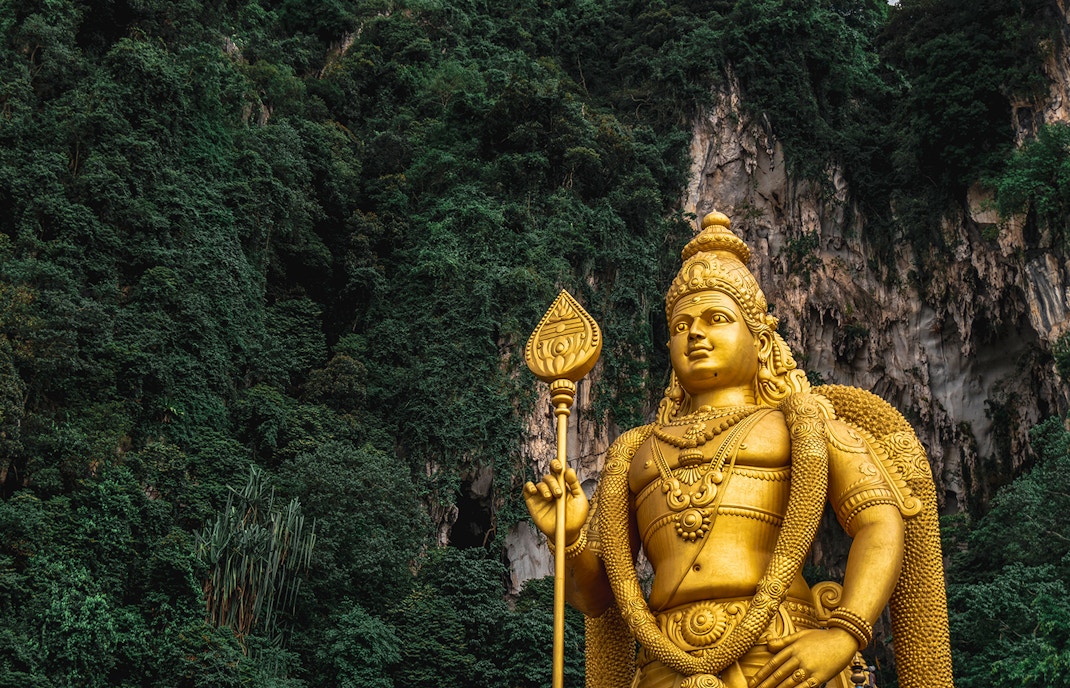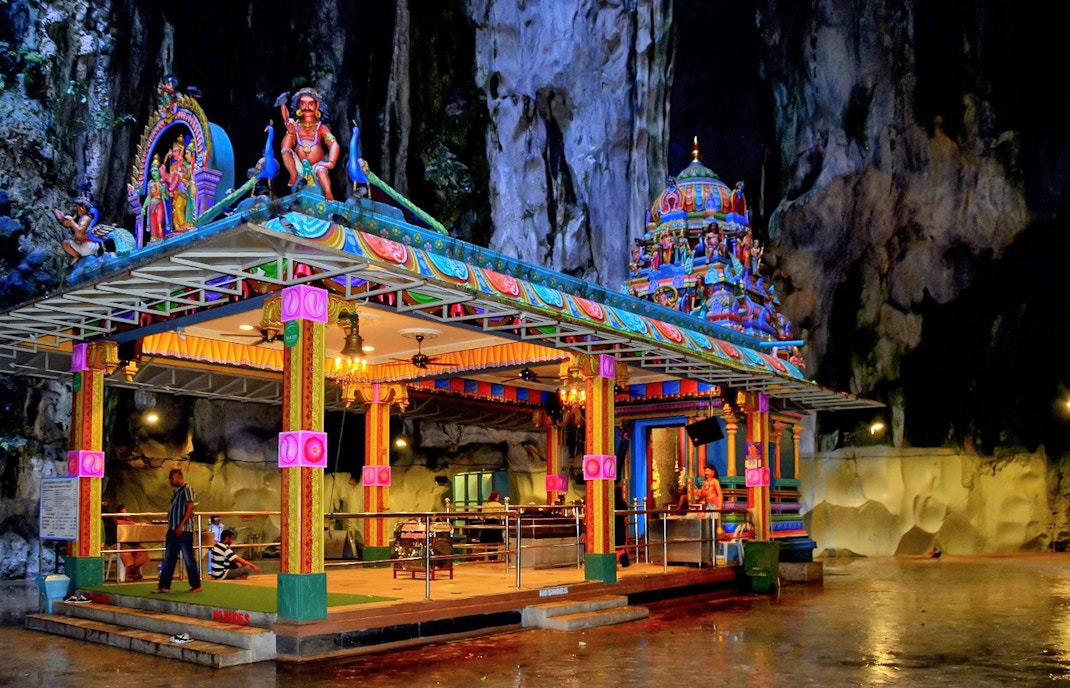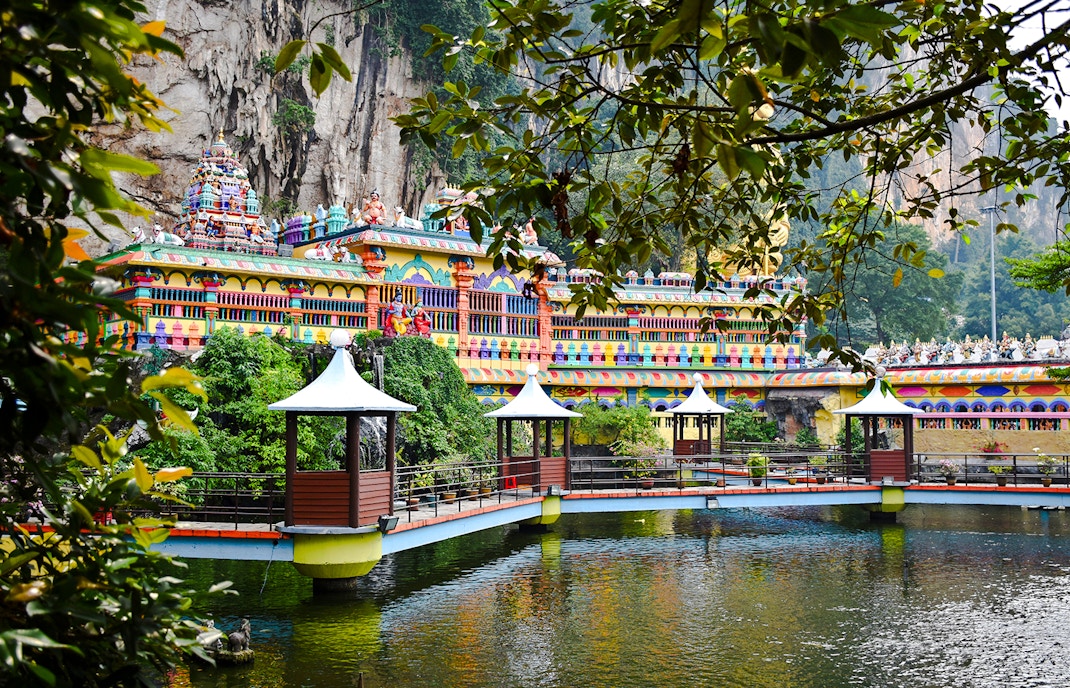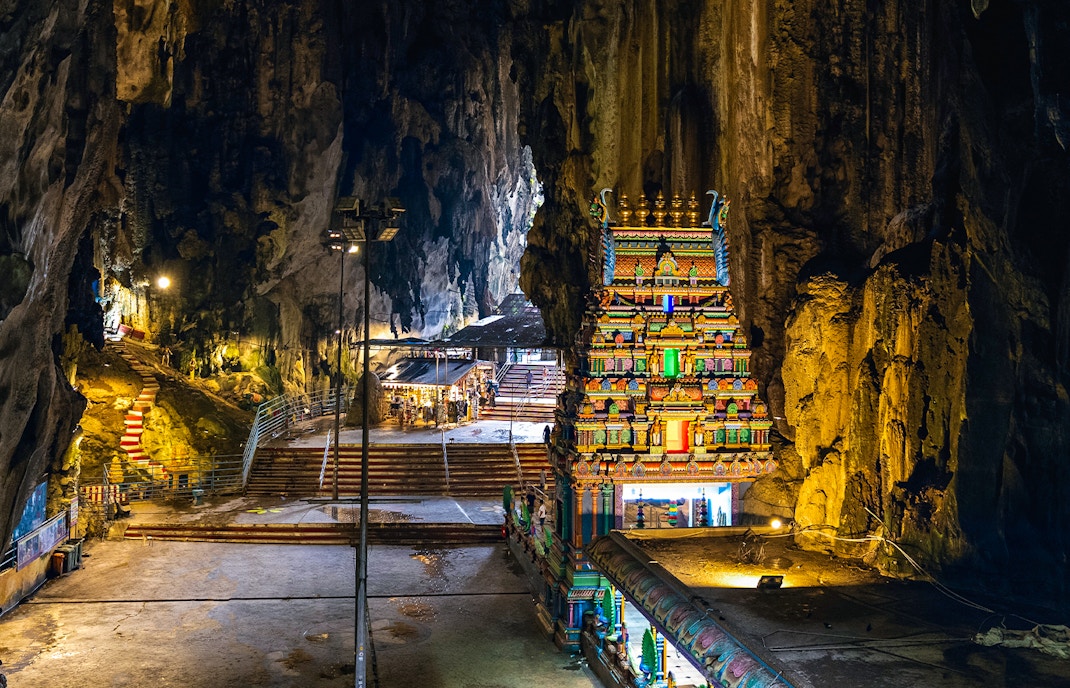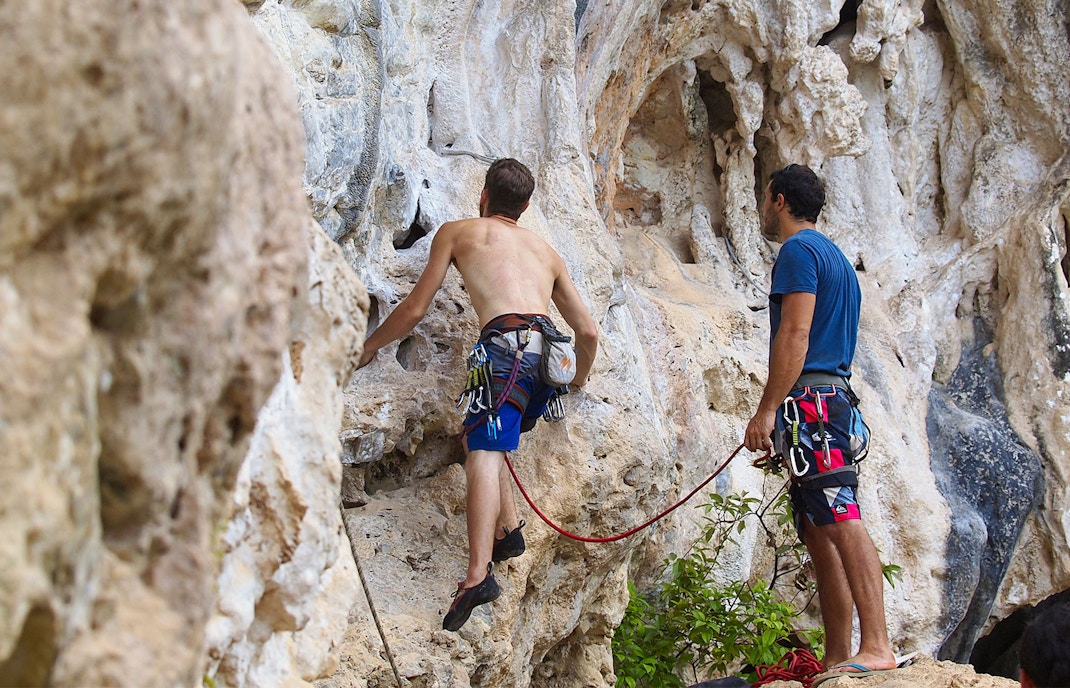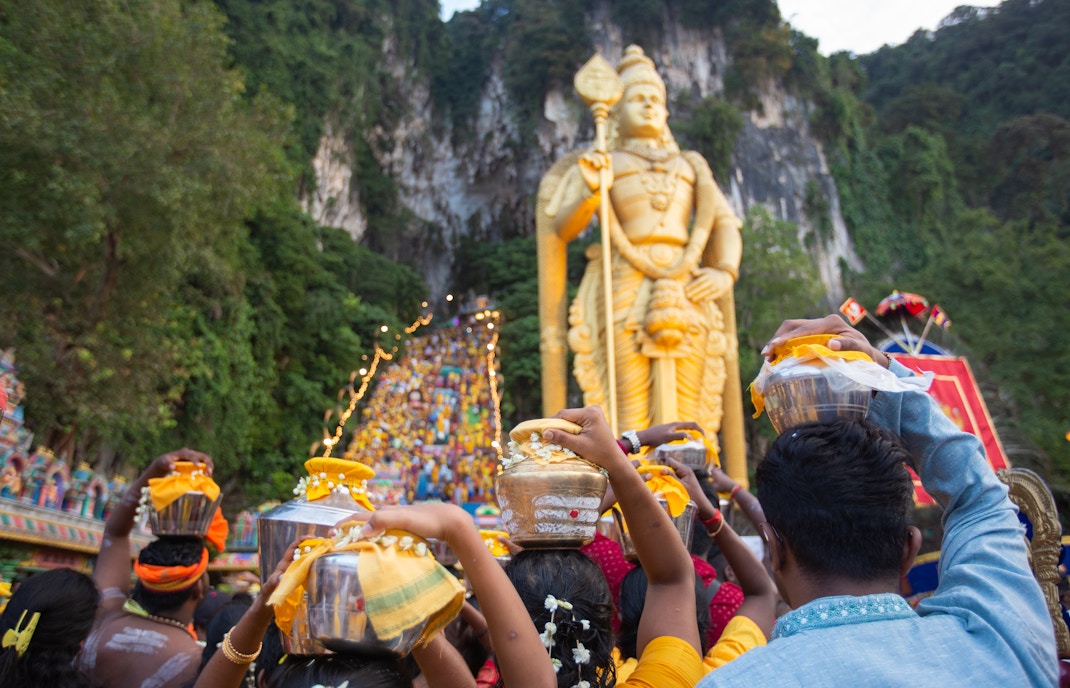Inside Batu Caves: What’s the atmosphere like?
Walking into the Temple Cave is an amazing experience. The temperature drops slightly, the noise fades, and you’re surrounded by towering limestone walls that have stood for millions of years. Incense wafts through the air, mingling with the sounds of prayers and fluttering pigeons.
The wide-open space inside is surprisingly peaceful, especially in the morning. As your eyes adjust to the dim natural lighting, you’ll notice intricate shrines carved into the rock, each one actively used by devotees. Monkeys scurry across ledges, and the occasional shaft of light pierces through the cave’s ceiling, spotlighting the interior with an almost divine glow.


